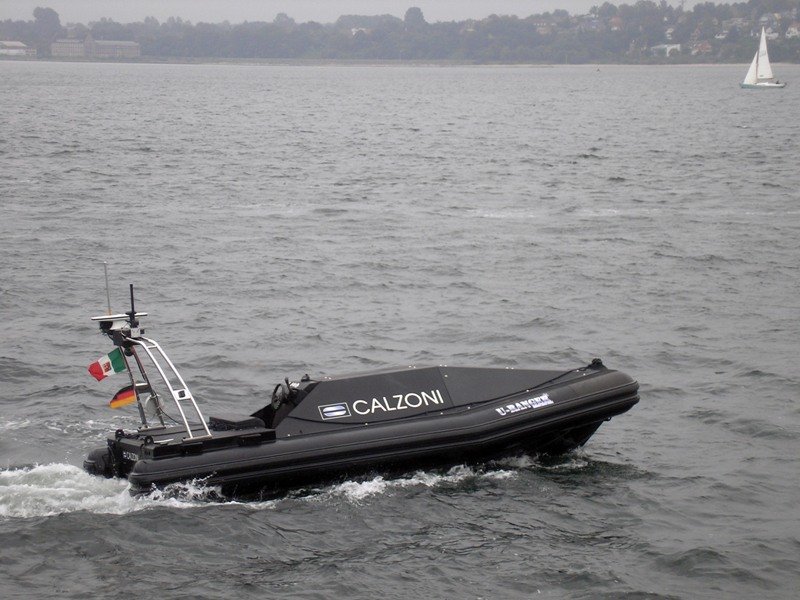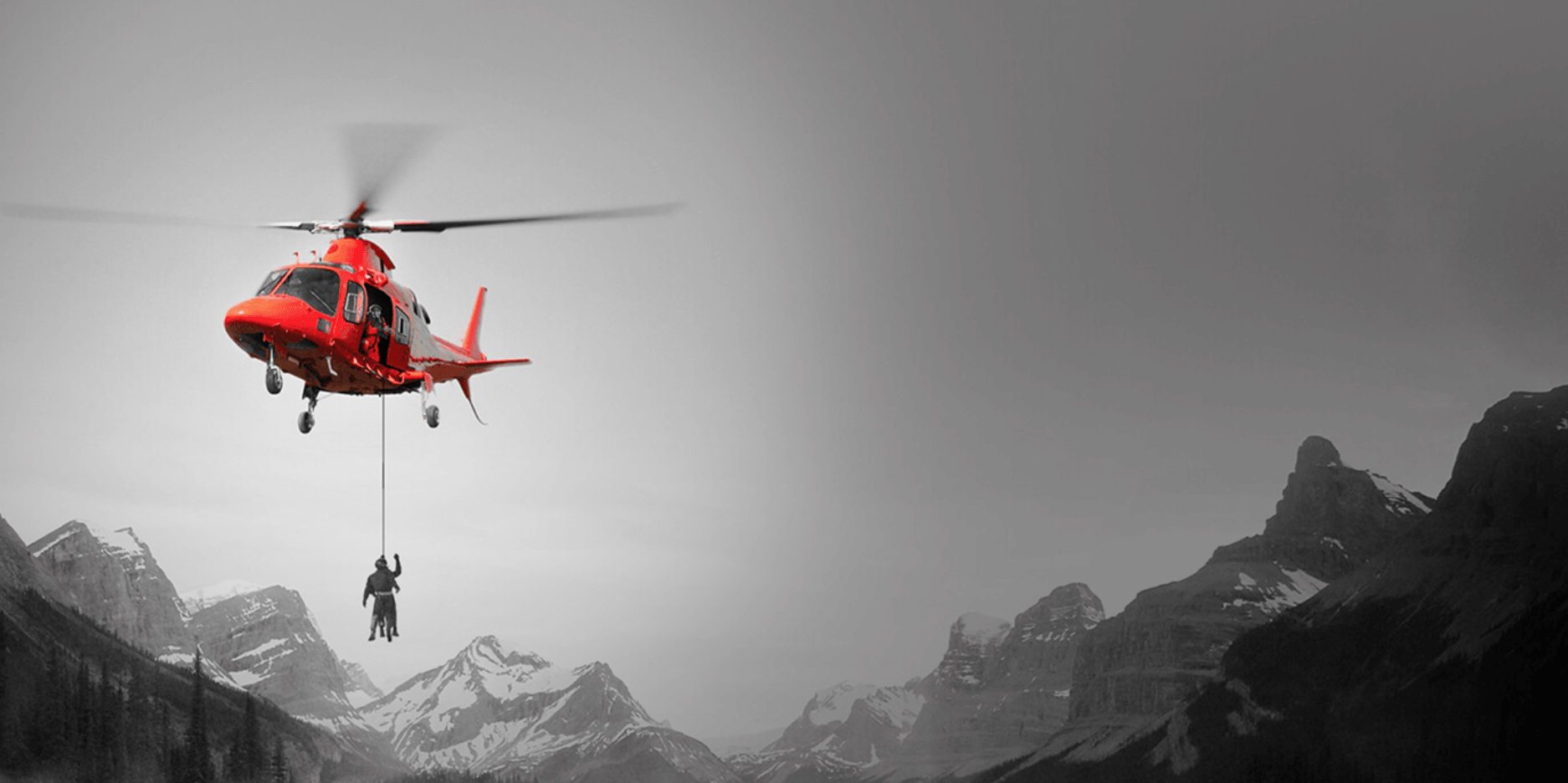In the past decade the number of people killed by natural disasters each year has ranged from as low as 14,389 in 2015 to as high as 314,503 in 2010, according to the International Federation of Red Cross and Red Crescent Societies. Every year over 100,000,000 people are also affected by natural disasters. Government, companies, and aid organizations are all working to keep these tragic deaths as low as possible. One tool they have turned to for help in recent years is search and rescue robots.
Robots and drones provide numerous benefits for disaster response. They can often fit into places humans can’t, they can operate in environments humans can’t, they can operate continuously without sleep, they can even outperform humans in certain tasks, and most importantly they are replaceable. Robots can be sent places which are too dangerous for human rescue workers, which is often needed in disaster areas.
In this article we’ll explore:
- Current robotic and drone applications for search and rescue
- The specific scenarios that require these robotic applications
- How search and rescue robots may change or evolve in the near future
Robots and drones of all different shapes and sizes are being used in a variety of applications in this field, so this article will divide them into where they are being deployed: land, air or water.
The Value of Better Search and Rescue with Robotics
As this short compilation from the Center for Robot-Assisted Search and Rescue (CRASAR) shows, search and rescue robots have been used for over a decade in all three environments:
Obviously, better search and rescue efforts can find people in need more quickly. Finding people faster can save lives and produce better outcomes for serious injuries. For someone with a serious injury to their leg, finding them a few hours faster can make the difference between saving their limb or needing an amputation that will impact the rest of their life. But the benefits extend well beyond the direct humanitarian issues.
The faster rescue workers can determine that everyone who was in a building that collapsed has been accounted for, the sooner repair crews can clear the roads, the sooner demolition crews can remove the building, and the sooner the community can start to rebuild. Dr. Robin Murphy, Raytheon professor in the Department of Computer Science and Engineering at Texas A&M University, claims that “If you can reduce the initial response by one day, you can reduce the overall recovery by 1000 days.”
Search and Rescue on Land
At the moment robots aren’t nearly as nimble as humans when it comes to traversing uneven and unpredictable ground (like that you would expect to find after an earthquake or flood). While there are numerous companies trying to develop biped robots that can walk, run, and scramble over uneven ground as well as humans, the technology is not yet there.
As the video from the 2015 DARPA world challenge (which focused on developing rescue robots) makes it clear, while some big strives have been made, for many tasks robots are nowhere near as fast or dextrous as humans:
These robots might have some limited uses, (such as in a place too radioactive for a human to survive), but when it comes to search and rescue on the ground, humans are likely to be used as the first search and rescue efforts.
On land, one major advantage robots currently bring to the table is their size. Small robots can be built to fit into places humans can’t. Robots can travel through small tunnels underground, pass through small gaps, or fit into tiny pockets of air beneath fallen buildings.
Currently, the small normally remote controlled robots used in this capacity tend to be the same robots used for inspections in small spaces at industrial facilities, or a slightly modified version of them. The company Inuktun is a major producer of these robots and their equipment was used after 9/11 at the twin towers site and after Hurricane Katrina. These small robots with their tank-like treads can easily travel into small and dangerous spaces. This video demonstrates how one was used after Katrina.
These small wheeled robots come in a variety of shapes and design to help them move around difficult terrain.
Future Land Applications
These treaded robots have been steadily getting better over the years and can use sensors ranging from cameras to carbon dioxide detectors to tell if people are still breathing. However, they still follow the basic design they have for the past several years. In the future, we might see truly flexible robots that can travel through even smaller holes or bend around obstacles.
Researchers at Stanford University have been developing a robot which is basically a long, air-filled tube with a small camera on the end. Instead of moving through the environment, the robot basically grows into it. The unusual design allows it to fit in and maneuver around very small spaces. They explain how it works in the following video:
Companies like Boston Dynamics are currently working on sophisticated AI powered robots capable of traveling over uneven terrain and carrying significant weight, such as their robots Spot, Spotmini, and Atlas:
One of the latest videos from Boston Dynamics features an incredible dexterity in it’s Atlas robot. See the machine below leap from platform to platform and finish it’s routing with a near-perfect backflip:
At the moment the technology is not yet capable of serving as a true robotic medic, which could carry people off the battlefield or out of a disaster zone, but it is easy to envision how something similar could eventually see real use in such scenarios in the future.
While Boston Dynamics work has been heavily funded by the military via DARPA, one of the main goals for their technology since the beginning has to develop robots search and rescue functions. The original intend was a machine that could do things humans can’t like turn off valves in a nuclear plant during a meltdown.
Given the cost of new technology and the nature of which government agencies have sufficient funding it is likely this technology would first see deployment in military applications, such as battlefield recovery, but soon spill over into civilian applications.
Search and Rescue on Water
Where search and rescue robots have produced a clear advantage is in the air and in water — environments where humans aren’t naturally designed to go. Robots don’t need to breathe under water, they don’t need food (or restrooms) at sea, and they aren’t bothered by motion sickness.
On the rescue side, the Emergency Integrated Lifesaving Lanyard (EMILY) from Hydronalix is being used to save people who are drowning or stuck in rough waves. The highly durable, remote controlled vehicle can travel 22 mph and be easily deployed in places that might be too dangerous for a human lifeguard. Individuals in the water can grab onto the vehicle to use a flotation device. EMILY can tow people back to shore or to a nearby boat. It is also capable of bringing rescue ropes into the surf so that once an individual has grabbed EMILY they can be pulled back in more easily.
One of the first places to use EMILY was Malibu California, which has a significant problem with riptides. EMILY was an early search and rescue robot meant to work very close to shore under human control, but the company since added AI capacity to other versions of their robots meant to travel farther out.
To find people lost in the water the same company also has the SEARCHER, a small unmanned surface vehicle that can fit into a suitcase. The SEARCHER is capable of traveling via autonomous autopilot control and can travel 22 mph scanning an area via radar, sonar, lidar, and hyperspectral imaging.
In addition, several companies are developing moderated autonomous unmanned water surface vehicles for military applications, but these same machines could be adapted for search and rescue efforts. For example, Calzoni U-Ranger, an unmanned surface vehicle designed for minesweeping, was used in the European Union’s Integrated Components for Assisted Rescue and Unmanned Search operations (ICARUS) demonstration. The vehicle is capable of operating remotely, assisted or fully autonomous.

Future Water Applications
Current unmanned maritime vehicles being used for search and rescue are relatively small and have a limited range, but that will probably change in the future. Last year the United States Navy began testing the Sea Hunter, a full sized autonomous ship theoretically capable of traveling 10,000 nautical miles. You can see the Sea Hunter in action in the video below:
Navy vessels are already often pressed into service to rescue people at sea, but it is possible in the future we could have fully autonomous vehicles spread throughout the ocean ready to respond to emergencies Such as rescuing victims stranded on a vessels which are sinking or lost the ability to move.
(Readers with a further interest in AI and watercraft might enjoy our full article on autonomous boats.)
Search and Rescue in the Air
The advancement in unmanned aerial vehicle (UAV) technology has had a clear and tangible benefit on search and rescue operations around the world. It is also another example of where what was first military technology has been readily adapted for search and rescue. The same sensors and algorithms used to detect combatants on the battlefield can also be used to find individuals trapped in a building or flood waters. Thermal imaging, lidar mapping, object recognition, etc. are all being used to help find and save people.
Multiple companies such as RMUS, , DSLPros, AtiGator, and DJI all sell drones or drone technology specifically for search and rescue.
The ability of UAVs to quickly, cheaply, and safely search or map large areas is resulting in their rapid adoption. Recently the National Parks Service started using fleets of drones at the Grand Canyon and other parks. According to Chief Ranger Matt Vandzura drones are doing the job which previously took a helicopter with a crew of four to five people. This means searches can start faster, be completed cheaper, and don’t require putting anyone at risk. There were 106 helicopter accidents in the United States last year of which 17 were fatal, according to the FAA.
Drones are being used in a variety of applications such as finding lost hikers. The 2-minute video below showcases CSB coverage of drones being used to find two lost hikers in the Pike National Forest in Colorado:
Drones were also used to map the damage in Nepal after the the disastrous 2015 earthquake. In the 5-minute video below, drone manufacturer DJI shows how university students and aide workers worked together with drone technologies to assess damages. The hope is that this technology will help Nepal (or other affected areas) to better plan and prioritize their reconstruction efforts after a catastrophe:
Drones aren’t just cheaper, safer, and faster to deploy than other alternatives for search and rescue functions, but they can also outperform older methods.
Australia has started using drones equipped with artificial intelligence to detect sharks to try to prevent shark attacks. Humans have only about a 20-30 percent success rate of identifying sharks from aerial images, according to Dr. Nabin Sharma, a research associate at the University of Technology Sydney’s School of Software, but he claims their algorithm has a 90 percent success rate. The video shows their system in action:
Future Air Applications
In the future, drones in search and rescue could be cheaper, better, smaller, smarter, and/or more versatile. As the shark detection example shows it is becoming easier to automate the process of finding people or sources of danger. It is likely in the near term we will have drones autonomously patrol the water or air without any human involve. Drones that know how to look for signs of distress like a burning ship or person struggle and automatically alter rescues.
Another possible use might be future years could be instead of just two or three larger drones searching overhead for a lost hiker, you could at the have a swarm of dozens, hundreds, or even thousands of small drones all looking together. Swarms drones could communicate to cover more area quickly and specialize. Bigger drones could be augmented with tiny drones small enough to fly between trees and also capable of diving and swimming to search in water. This might be useful in a thick forested with caves.
This a future that researchers at the Wyss Institute at Harvard are trying to make a reality with the autonomous RoboBees. They are developing extremely small and lightweight drones. Instead of using traditional rotating blades, they use bio-inspired wings. This video shows the device swimming and getting out of the water:
These Robobees are still in the early stages of development, but the military is already perfecting the technology to allow swarms of autonomous drones to communicate and work together.
Concluding Thoughts on Search and Rescue Robots
The needs of search and rescue teams in many ways mirror the needs of the military. They both operate in dangerous environments, they want to find ways to gather information while keeping personnel out of harm, and they are both looking for people.
Looking at the development of military robots, it is clear this technology has been filtering down to the civilian world. Many of the same technologies that militaries developed to find and kill people are now being used to find and save people. When trying to get a sense of the future of robots in search and rescue, look at the current, cutting edge military technology. The military market is significantly larger than the civilian first aid market, so will likely be the major source of funding for many of these developments for the foreseeable future.
While robots are being tested and deployed in a range of search and rescue functions, the technology which has already widely adopted is unmanned aerial vehicles. The number of local governments and private organizations buying and using drones for public safety and commercial reasons is likely to grow at a significant pace in the coming years.
An aerial view is useful in almost every disaster scenario, and drones are significantly easier, cheaper, and safer to deploy than helicopters. Drones not only have the capacity to map an area but thanks to AI they have the potential to outperform humans at finding objects – such as sharks in the water, hikers lost in the woods, or debris from a shipwreck or plane wreck.
On a longer time frame the advancement in large walking robots could eventually be a significant game changer. Not only could these system help find people but would be able to physically carry them out of danger.
The value of improved search and rescue technology can’t just be thought about in terms of the number of lives it saves. While that is hugely important, the improvements are going to impact millions of people. Being able to quickly map and assess damage, like they did in Nepal, can help a community rebuild and recover much faster.
Header image credit: McMurdo Group




















